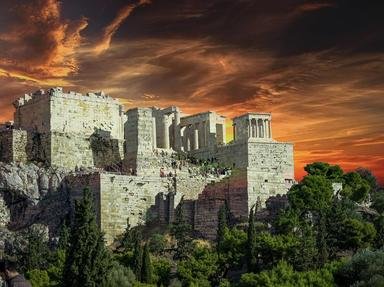Quiz Answer Key and Fun Facts
1. Which Greek island was the centre of the Minoan civilisation?
2. The Minoan culture flourished during the IIIrd and IInd millennium BCE. What archaeological period does this correspond to?
3. The ruins of a number of multi-functional architectural complexes have been excavated on the island. What is the best known of these 'palaces'?
4. Vibrant, flowing frescoes depicting Minoan life adorned many of the palace walls and floors. What distinguishes a true fresco from other wall art?
5. Examples of Minoan pottery have been found throughout the Mediterranean region. Since the form and style of this pottery evolved rapidly as the Minoan culture flourished and declined, it has been used as a system of relative dating. What name is given to the last purely Minoan style?
6. The Minoans did not have a written language.
7. What form did the principal Minoan deities take?
8. The Minoans had quite a healthy and varied diet. They hunted, fished, raised livestock and tilled the soil. Which of these is a common local agricultural product?
9. The Minoans were seafarers and merchants. Ceramics and foodstuffs were traded for goods such as ivory and metals used in the manufacture of bronze. What metal was sourced from Cyprus?
10. Which of the following has NOT been proposed as a contributing, or correlating, factor in the decline of the Minoan civilisation?
Source: Author
turtle52
This quiz was reviewed by FunTrivia editor
bloomsby before going online.
Any errors found in FunTrivia content are routinely corrected through our feedback system.


